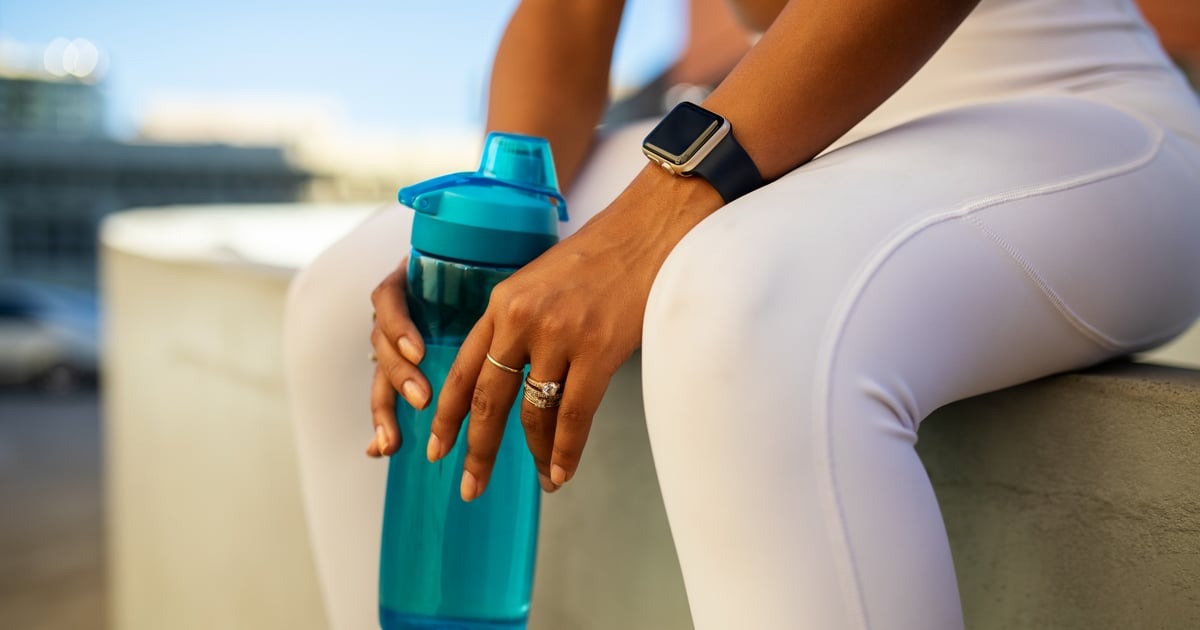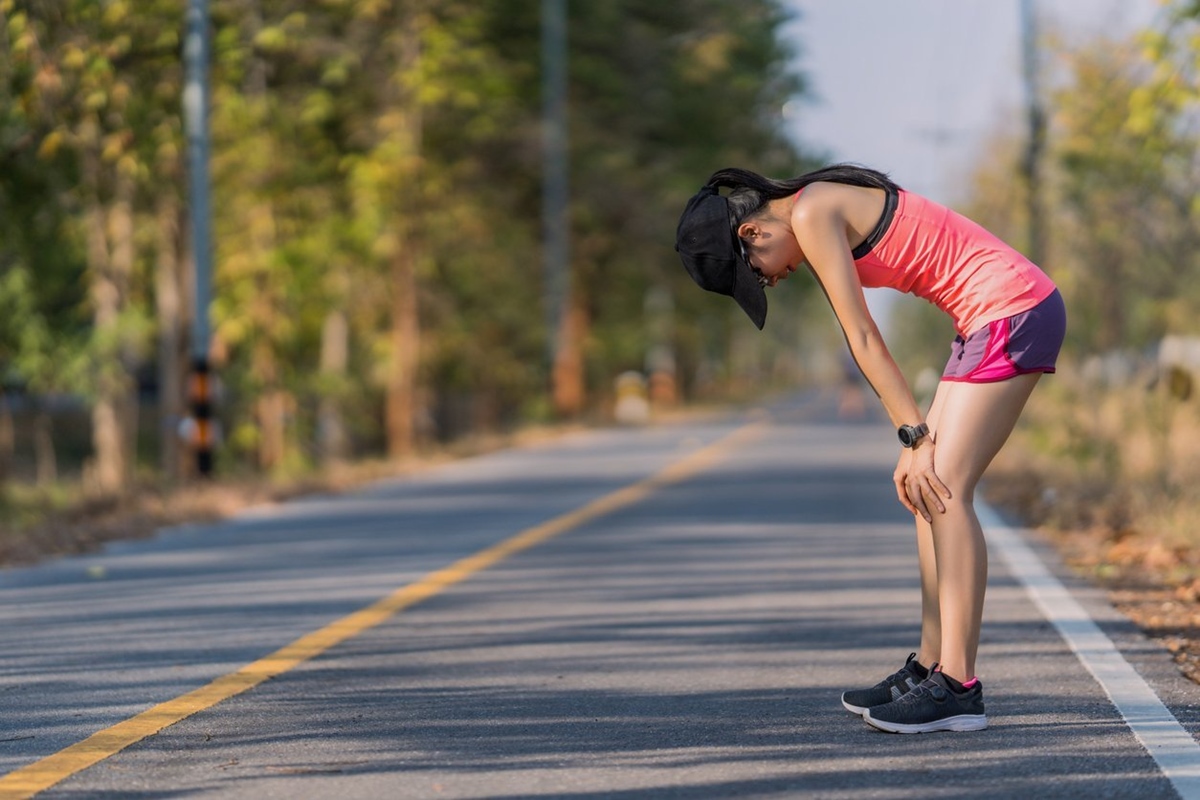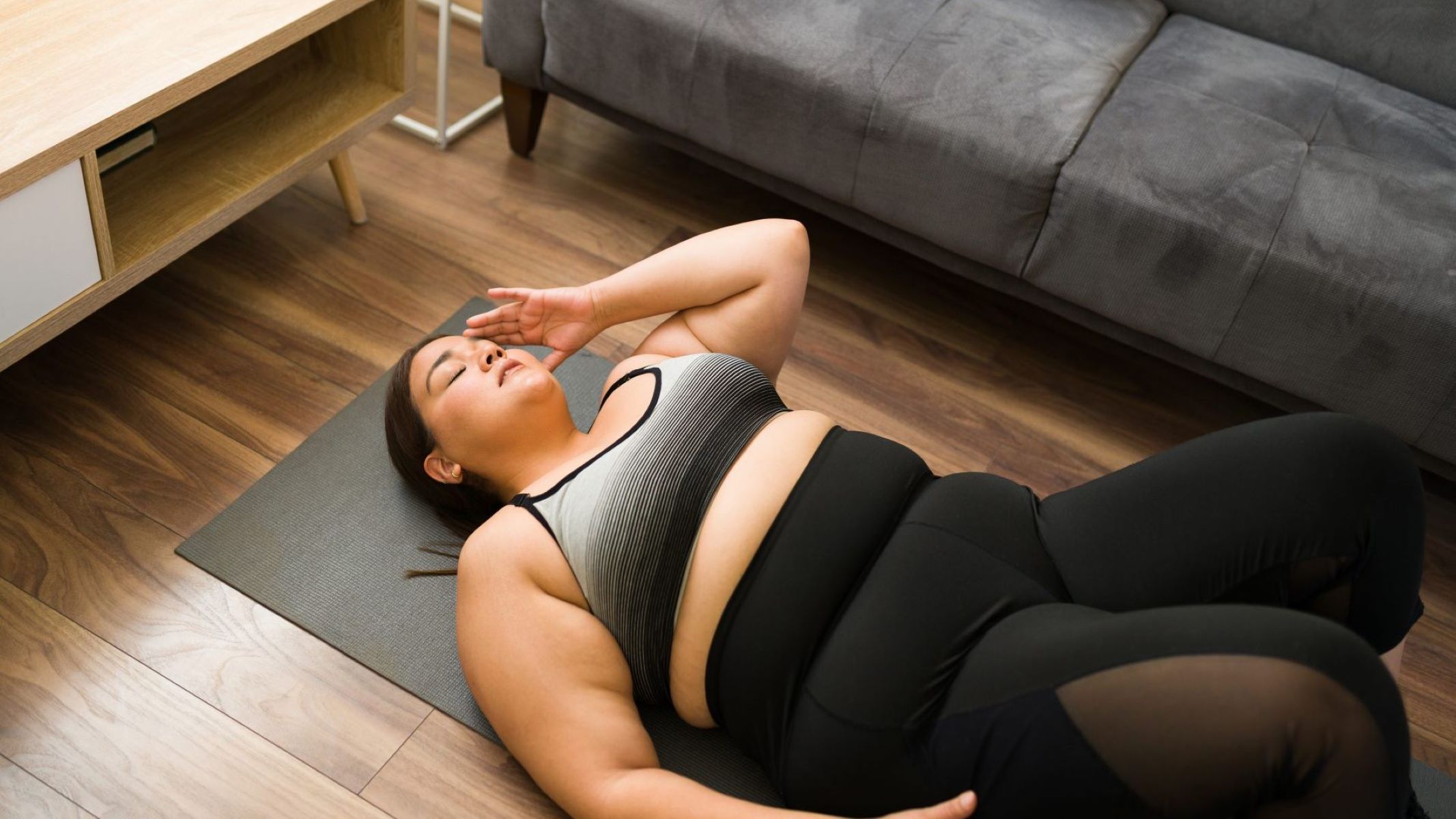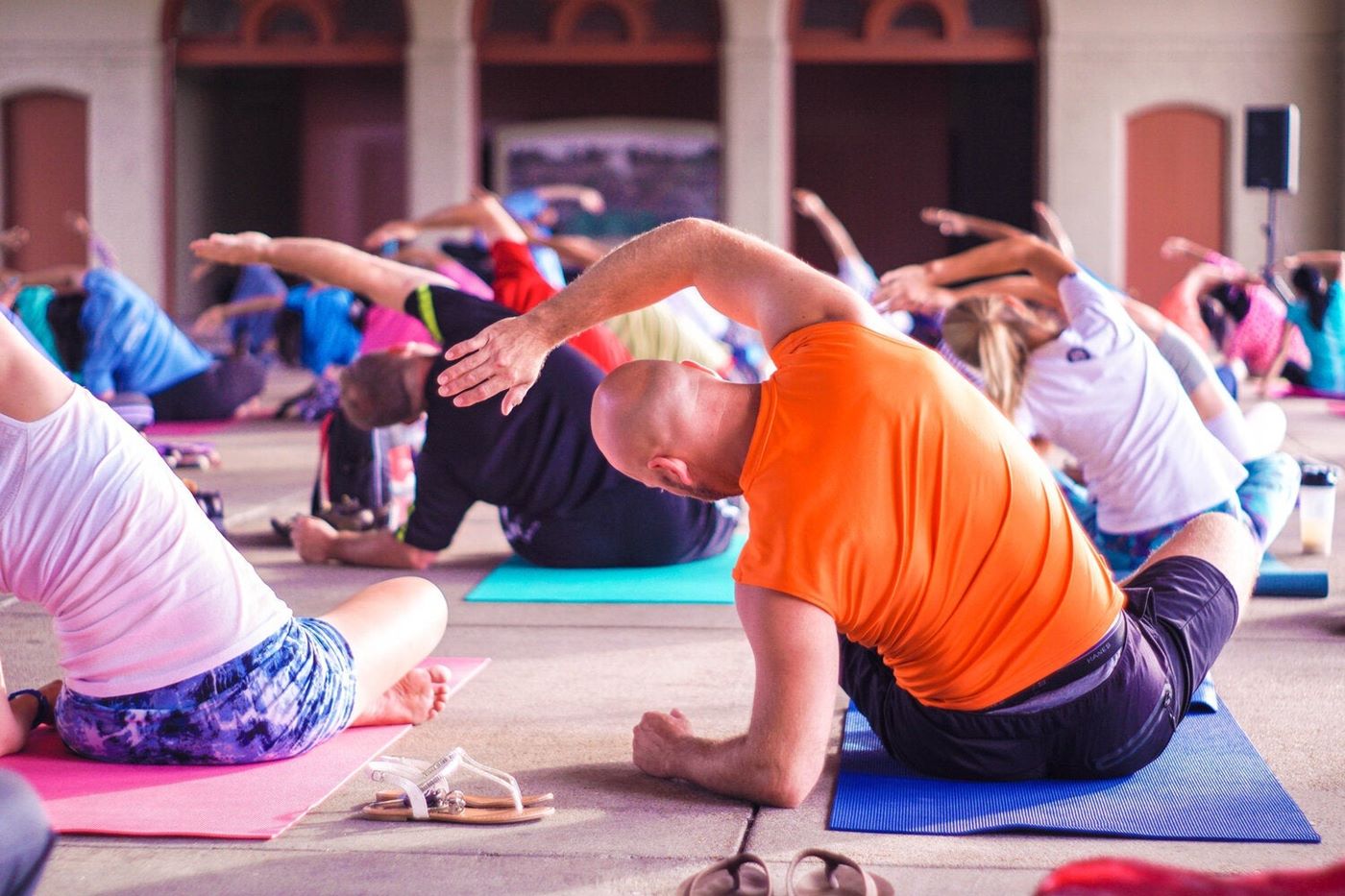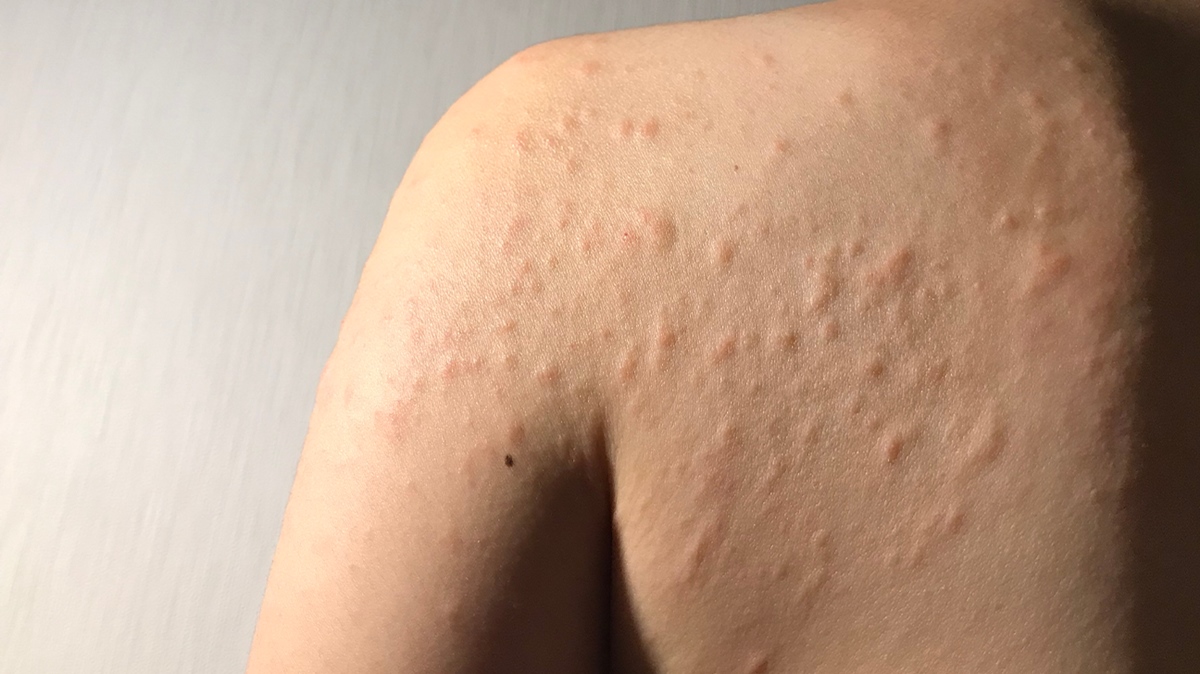

Featured
How Rare Is Exercise-Induced Urticaria
Published: September 27, 2023
Discover the truth about exercise-induced urticaria and how rare it really is in our featured article. Explore causes, symptoms, and treatment options.
Introduction
Exercise-induced urticaria, also known as exercise-induced hives, is a relatively rare condition that affects a small percentage of individuals who engage in physical activity. It is characterized by the development of itchy, red welts or hives on the skin during or shortly after exercise. This condition can significantly impact the quality of life and hinder one’s ability to participate in physical activities.
Exercise-induced urticaria is believed to be a form of physical urticaria, which refers to hives and other allergic reactions that are triggered by physical stimuli. While the exact cause of exercise-induced urticaria is not fully understood, it is thought to involve a combination of genetic predisposition, immune system dysfunction, and environmental factors.
For individuals affected by exercise-induced urticaria, the symptoms can range from mild discomfort to severe itching, swelling, and even difficulty breathing. These symptoms typically occur within minutes of starting exercise and can last for several hours. The severity and duration of symptoms can vary from person to person.
Diagnosing exercise-induced urticaria can be challenging, as the symptoms can be similar to other forms of physical urticaria or exercise-induced anaphylaxis. Therefore, a comprehensive evaluation by a medical professional is necessary to determine the underlying cause of the symptoms and develop an appropriate treatment plan.
Although exercise-induced urticaria cannot be completely cured, there are various treatment and management strategies that can help alleviate symptoms and allow individuals to continue enjoying physical activities. These include medication, lifestyle modifications, and preventive measures to minimize the risk of triggering an allergic reaction during exercise.
In this article, we will delve into the causes, triggers, symptoms, diagnosis, treatment, and preventive measures for exercise-induced urticaria. By gaining a deeper understanding of this condition, individuals affected by exercise-induced urticaria and their healthcare providers can develop strategies to effectively manage and minimize its impact on daily life.
Understanding Exercise-Induced Urticaria
Exercise-induced urticaria is a type of physical urticaria characterized by the development of hives or welts on the skin during or shortly after exercise. It is considered a rare condition, affecting only a small percentage of individuals who engage in physical activity.
When a person with exercise-induced urticaria exercises, their body reacts to the physical exertion as if it were an allergic reaction. This leads to the release of histamine and other chemicals in the body, resulting in the characteristic symptoms of hives, itching, redness, and swelling.
While the exact cause of exercise-induced urticaria is not fully understood, it is believed to involve a combination of factors. One possible cause is an abnormal response of the immune system, where exercise triggers the release of histamine and other immune mediators, causing an allergic-like reaction.
In some cases, exercise-induced urticaria may be triggered by certain types of food that are consumed before exercise. These include foods high in histamine, such as shellfish, certain fruits, and fermented products. In addition, some individuals may also be sensitive to additives or preservatives present in certain foods or drinks.
Exercise-induced urticaria can occur with both aerobic and anaerobic activities, and it is not restricted to high-intensity exercises. Even mild or moderate physical activity can trigger symptoms in susceptible individuals. It is important to note that exercise-induced urticaria can occur in individuals of all ages and fitness levels.
It is also worth mentioning that exercise-induced urticaria can sometimes be associated with other forms of physical urticaria, such as cholinergic urticaria (hives triggered by heat, stress, or sweating) or cold urticaria (hives triggered by cold temperatures).
Despite its rarity, exercise-induced urticaria can have a significant impact on a person’s quality of life. It may result in the avoidance of physical activity due to fear of triggering symptoms and can hinder one’s ability to engage in sports, fitness routines, or even everyday activities that require exertion.
Understanding the nature of exercise-induced urticaria is crucial for effective management and prevention of symptoms. In the following sections, we will delve into the causes, triggers, symptoms, diagnosis, treatment, and preventive measures for this condition, providing valuable insights for individuals affected by exercise-induced urticaria and their healthcare providers.
Causes and Triggers of Exercise-Induced Urticaria
The exact cause of exercise-induced urticaria is still not fully understood. However, there are several factors that are believed to contribute to the development of this condition. One possible cause is an abnormal immune response to physical exertion, leading to the release of histamine and other chemicals in the body.
In some cases, exercise-induced urticaria may be triggered by certain types of food that are consumed before exercise. Foods high in histamine, such as shellfish, certain fruits, and fermented products, can stimulate an allergic-like response during exercise. Additionally, additives or preservatives present in certain foods or drinks can also be triggers.
Furthermore, exercise-induced urticaria can sometimes be associated with other forms of physical urticaria, such as cholinergic urticaria (hives triggered by heat, stress, or sweating) or cold urticaria (hives triggered by cold temperatures). These conditions may have overlapping triggers or share similar underlying mechanisms.
It’s worth noting that exercise-induced urticaria can occur with both aerobic and anaerobic activities, and it is not limited to high-intensity exercises. Even mild or moderate physical activity can trigger symptoms in susceptible individuals. The onset of symptoms usually occurs within minutes of starting exercise and can last for hours.
Individuals with exercise-induced urticaria may also experience symptoms in specific environments. For example, some may develop hives when exercising in hot and humid conditions, while others may have symptoms in cold or dry climates. Understanding these triggers can help individuals modify their exercise routines and environments to minimize the risk of symptoms.
In addition to physical triggers, other factors, such as stress and emotional factors, may play a role in triggering exercise-induced urticaria. Stressful situations or strong emotions can activate the immune system and lead to the release of inflammatory substances, potentially triggering hives during or after exercise.
It is important for individuals with exercise-induced urticaria to identify their specific triggers through careful observation and documentation. Keeping a detailed record of exercise activities, food and drink consumption, environmental conditions, and emotional state can help pinpoint potential triggers and aid in developing effective management strategies.
In the next sections, we will explore the symptoms, diagnosis, treatment, and preventive measures for exercise-induced urticaria, providing valuable insights for individuals affected by this condition and their healthcare providers.
Symptoms and Diagnosis of Exercise-Induced Urticaria
Exercise-induced urticaria is characterized by the appearance of hives or welts on the skin during or shortly after physical activity. These hives are usually itchy and may be accompanied by redness and swelling.
The symptoms of exercise-induced urticaria can vary in severity and duration. Some individuals may only experience mild itchiness and a few hives, while others may have more intense symptoms, including widespread hives, angioedema (swelling), and even difficulty breathing.
The onset of symptoms typically occurs within minutes of starting exercise and can continue for several hours. In some cases, symptoms may persist for up to 24 hours or longer after exercise. It is important to note that exercise-induced urticaria can affect any area of the body and is not limited to the areas exposed to physical activity.
In addition to hives, individuals with exercise-induced urticaria may also experience other systemic symptoms, such as headache, dizziness, nausea, and fatigue. These symptoms can further impact one’s ability to engage in physical activity and may vary in intensity from person to person.
Diagnosing exercise-induced urticaria can be challenging, as the symptoms can resemble other forms of physical urticaria or even exercise-induced anaphylaxis. An accurate diagnosis requires a thorough evaluation by a healthcare professional, including a detailed medical history, physical examination, and potentially additional diagnostic tests.
During the evaluation, the healthcare provider may ask about the individual’s exercise routines, any specific triggers or patterns noticed, and any accompanying symptoms experienced. It is important to provide as much information as possible to help the healthcare provider make an accurate diagnosis.
In some cases, the healthcare provider may recommend a physical challenge test to confirm the diagnosis. This involves supervised exercise in a controlled environment, such as a hospital or clinic, while closely monitoring for the development of symptoms. This test helps differentiate exercise-induced urticaria from other conditions with similar symptoms and guides appropriate treatment planning.
In certain situations, additional tests may be recommended to rule out underlying conditions or triggers. These may include blood tests, skin tests, or other specialized tests to assess the immune system’s response to exercise or specific allergens.
It is important to remember that exercise-induced urticaria is a complex condition, and a comprehensive evaluation by a healthcare professional is necessary to determine the underlying cause of the symptoms and develop an appropriate treatment plan.
In the following sections, we will explore the treatment options, management strategies, and preventive measures for exercise-induced urticaria, providing valuable insights for individuals affected by this condition and their healthcare providers.
Treatment and Management of Exercise-Induced Urticaria
While exercise-induced urticaria cannot be fully cured, there are various treatment and management strategies available to help alleviate symptoms and improve the quality of life for individuals affected by this condition.
One of the primary approaches in managing exercise-induced urticaria is the use of antihistamines. These medications help to block the action of histamine, reducing the severity of symptoms such as itching and hives. Antihistamines can be taken regularly, either on a daily basis or prior to exercise, to provide ongoing relief. It is essential to consult with a healthcare professional to determine the appropriate type and dosage of antihistamine for each individual’s specific needs.
In more severe cases, individuals with exercise-induced urticaria may require the use of other medications, such as leukotriene inhibitors or oral corticosteroids, to help control the allergic response and reduce inflammation. These medications are typically prescribed under the guidance of a healthcare professional and may have potential side effects, so close monitoring is essential.
Alongside medication, lifestyle modifications can play a crucial role in managing exercise-induced urticaria. It is advised to avoid triggering factors, such as certain foods or drinks consumed before exercise, extreme temperatures, or specific environmental conditions that have been identified as triggers. Additionally, wearing loose-fitting clothing, using sunscreen, and maintaining proper hydration during exercise can help minimize the risk of symptom onset.
For individuals who experience exercise-induced urticaria during specific activities or sports, modifying the exercise routine may be necessary. This can include adjusting the intensity or duration of exercise, opting for low-impact activities, or incorporating breaks during workouts to allow the body to recover and reduce the risk of symptoms.
Stress management techniques, such as deep breathing exercises, meditation, or yoga, may also be beneficial in reducing the likelihood of symptom development. Stress can trigger or exacerbate symptoms of exercise-induced urticaria, so practicing relaxation techniques can help modulate the immune response and promote overall well-being.
Regular follow-up visits with a healthcare professional are essential to monitor the effectiveness of the treatment plan and make any necessary adjustments. It is important to communicate any changes in symptoms, triggers, or lifestyle habits to ensure the best possible management of exercise-induced urticaria.
In some cases, desensitization therapy, also known as immunotherapy, may be recommended for individuals with severe or refractory exercise-induced urticaria. This therapy involves gradually exposing the individual to increasing amounts of exercise in a controlled setting to help the body become less reactive over time. This treatment option should be discussed with a specialist in allergen immunotherapy.
Overall, a multimodal approach that combines medication, lifestyle modifications, and individualized management strategies can help individuals with exercise-induced urticaria lead active and fulfilling lives while minimizing the impact of symptoms.
In the next section, we will discuss preventive measures and strategies that can help reduce the risk of triggering an allergic reaction during exercise.
Preventive Measures for Exercise-Induced Urticaria
Preventing exercise-induced urticaria involves identifying and avoiding triggers to minimize the risk of symptoms during physical activity. While it may not be possible to completely eliminate the occurrence of hives, taking certain preventive measures can help reduce their frequency and severity.
One of the key preventive measures is ensuring proper warm-up and cool-down routines before and after exercise. Gradually increasing the intensity of the workout and allowing the body to acclimate to physical activity can help minimize the likelihood of an allergic response. Cooling down with gentle stretching exercises can also help regulate body temperature and reduce the risk of symptoms.
Choosing the right time and environment for exercise can also play a role in preventing exercise-induced urticaria. Exercising in cooler temperatures or in well-ventilated areas can help prevent overheating and minimize the risk of symptoms associated with heat exposure. It is also important to avoid exercising in extreme weather conditions, such as high humidity or low temperatures, which can trigger or worsen symptoms.
Dietary modifications can also be beneficial in preventing exercise-induced urticaria. For individuals who suspect certain foods or drinks as triggers, avoiding or reducing their consumption before exercise may help minimize the risk of symptoms. Keeping a food diary and working with a healthcare professional or allergist can help identify specific dietary triggers and guide effective preventive strategies.
Wearing appropriate clothing during exercise is another preventive measure that can help manage exercise-induced urticaria. Using loose-fitting, moisture-wicking fabrics can help prevent excessive sweating and reduce friction on the skin, which can exacerbate symptoms. Additionally, wearing protective gear, such as gloves or knee pads, can help minimize the risk of skin irritation during high-impact activities.
Stress management is essential in preventing exercise-induced urticaria, as stress and strong emotions can trigger or worsen symptoms. Incorporating stress-reducing techniques, such as deep breathing exercises, meditation, or engaging in calming activities, can help modulate the immune response and minimize the risk of symptom onset during exercise.
It is also important to communicate with healthcare professionals and fitness trainers about the condition to ensure appropriate guidance and support. They can help tailor exercise programs, provide education on triggers, and offer advice on managing symptoms during physical activity.
Regular monitoring of symptoms and keeping a journal of exercise routines, environmental conditions, and any triggers noticed can help identify patterns and guide preventive measures. This information can also facilitate productive discussions with healthcare professionals, promoting individualized management and prevention strategies.
While exercise-induced urticaria may pose challenges, adopting preventive measures can significantly improve one’s ability to engage in physical activities and maintain an active lifestyle. By being mindful of triggers and implementing appropriate preventive strategies, individuals affected by exercise-induced urticaria can enjoy the benefits of exercise while minimizing the impact of symptoms.
In the final section, we will summarize the key points discussed and highlight the importance of a comprehensive and tailored approach to managing exercise-induced urticaria.
Conclusion
Exercise-induced urticaria, though rare, can significantly impact the lives of those affected. It is crucial to understand the causes, triggers, symptoms, diagnosis, treatment, and preventive measures associated with this condition in order to effectively manage and minimize its impact.
Exercise-induced urticaria is believed to be caused by an abnormal immune response to physical exertion, leading to the release of histamine and other chemicals in the body. The condition can be triggered by factors such as certain foods, extreme temperatures, stress, and emotional factors.
Diagnosing exercise-induced urticaria requires a comprehensive evaluation by a healthcare professional, including a detailed medical history, physical examination, and potentially diagnostic tests. Antihistamines and other medications can help alleviate symptoms, while lifestyle modifications and preventive measures, such as proper warm-up and cool-down routines, avoiding triggers, wearing appropriate clothing, and stress management, can help minimize the risk of symptoms during exercise.
Prevention plays a key role in managing exercise-induced urticaria and allowing individuals to engage in physical activities without constant worry of triggering symptoms. By identifying and avoiding triggers, maintaining a healthy lifestyle, and following tailored preventive strategies, individuals can lead active and fulfilling lives.
It is important for individuals affected by exercise-induced urticaria to work closely with healthcare professionals and trainers to develop personalized management plans. Regular follow-up visits and monitoring of symptoms can help ensure the effectiveness of the treatment plan and make any necessary adjustments.
Overall, exercise-induced urticaria may present challenges, but with proper understanding, management, and preventive measures, individuals can successfully navigate this condition and continue to enjoy the benefits of physical activity.
Remember, if you suspect you have exercise-induced urticaria or are experiencing symptoms, reach out to a healthcare professional for a comprehensive evaluation and guidance tailored to your specific needs. With the right approach and support, you can overcome the challenges posed by exercise-induced urticaria and live a fulfilling and active life.
